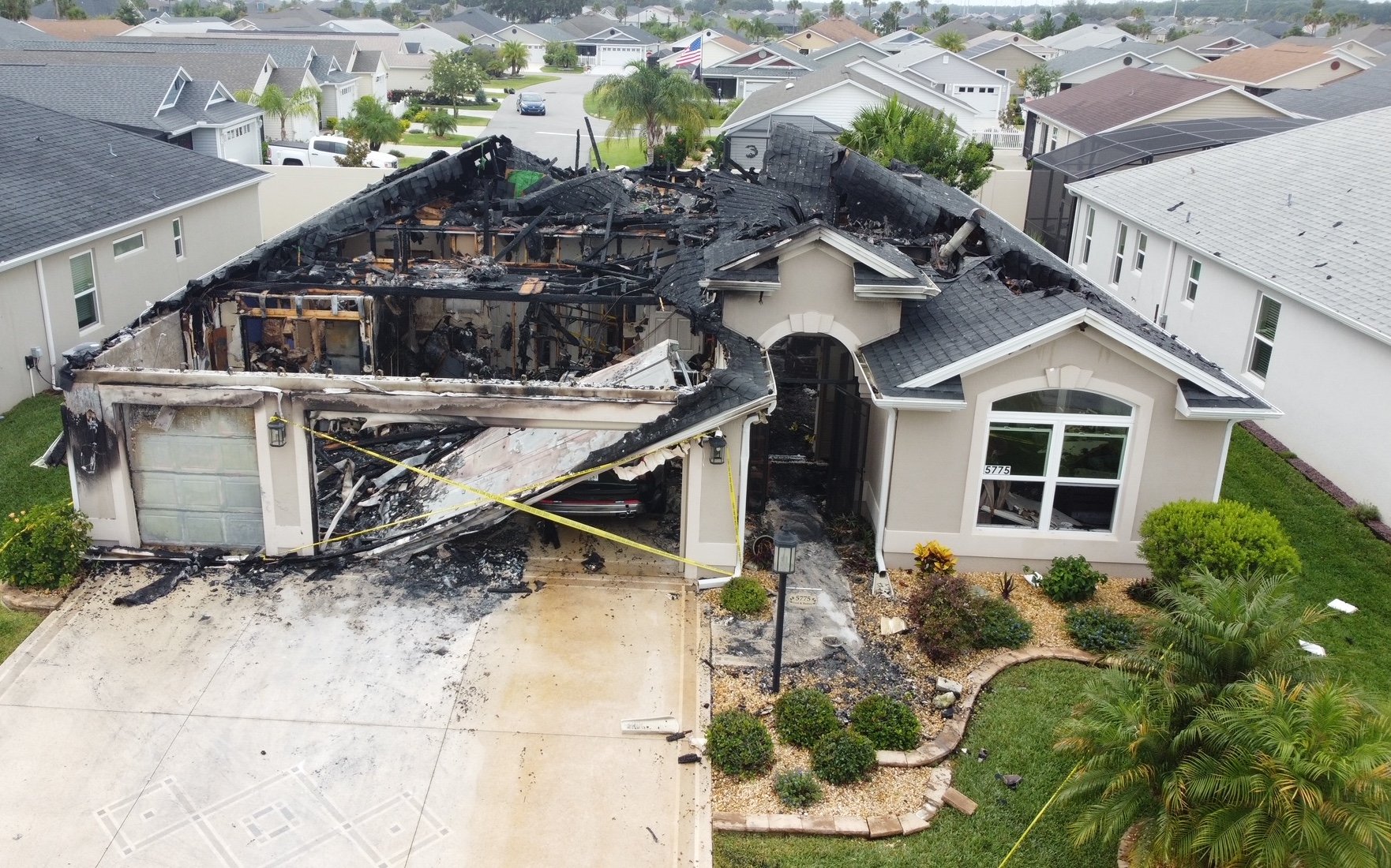Protecting Your Home from the Devastating Impact of Lightning Strikes
Lightning strikes are a powerful and unpredictable force of nature. While they can be mesmerizing to watch from a distance, their impact on residential properties can be both devastating and costly. Over the last decade, the frequency and intensity of thunderstorms in the United States have led to a significant number of lightning strikes directly affecting homes. This trend has been especially pronounced in states like Florida, Texas, and California, which consistently rank among the top for lightning-related insurance claims.
From 2017 to 2022, the United States saw an average of 62,000 lightning-related claims per year, with the total value of these claims often exceeding $1 billion annually (III). In 2023 alone, lightning strikes resulted in over $1.2 billion in insurance payouts to homeowners (Insurify). These numbers highlight the increasing risk that homeowners face and the growing financial burden associated with lightning damage. As thunderstorms become more frequent and intense due to changing weather patterns, the threat to residential properties is only expected to rise.
The Devastating Impact of Lightning Strikes on Homes
When a lightning strike hits a home, the immediate effects can be catastrophic. A direct strike can ignite fires, shatter roofing materials, and destroy structural components. The intense heat and energy from a lightning strike can cause significant damage to the electrical systems within a home, leading to widespread failures of wiring, appliances, and electronics. For instance, a single lightning strike can produce temperatures of up to 50,000 degrees Fahrenheit, causing combustible materials in the home to ignite instantly (StrikeCheck).
Even when lightning strikes nearby, rather than directly on a home, the consequences can be severe. Indirect strikes can send powerful surges of electricity through a home’s wiring and plumbing, damaging or destroying anything connected to the electrical grid. This can include not only high-value electronics like computers and televisions but also essential household systems such as HVAC units and refrigerators. The costs of replacing these items can quickly add up, especially when multiple systems are affected at once.
Between 2017 and 2023, the average cost per lightning-related insurance claim increased significantly, reflecting the growing severity of these incidents. In 2020, for example, the average cost per claim peaked at $28,885, underscoring the financial toll that even a single lightning strike can impose on a homeowner (III). Furthermore, the emotional stress and disruption caused by these events, including temporary displacement during repairs, can be overwhelming for families.
Financial Implications for Homeowners
The financial impact of a lightning strike extends far beyond the immediate costs of repairs and replacements. In states like California and Texas, where lightning strikes are more frequent, homeowners have faced average claim costs as high as $36,319 and $25,286, respectively (III). These costs can include everything from structural repairs and fire damage restoration to the replacement of electronics, appliances, and personal belongings.
Moreover, the frequency of lightning-related claims can lead to increased insurance premiums for homeowners. Insurers may raise premiums or impose higher deductibles on properties that are deemed at higher risk of lightning damage. This can create a long-term financial burden for homeowners, especially in regions where thunderstorms and lightning strikes are common.
In addition to the direct financial costs, homeowners must also consider the potential loss of irreplaceable items, such as family heirlooms, photographs, and important documents. While insurance can cover the cost of replacing damaged goods, the sentimental value of these items is often incalculable.
Mitigation Strategies: Protecting Your Home
Given the significant risks and financial implications associated with lightning strikes, it is essential for homeowners to take proactive steps to protect their properties. Traditional mitigation strategies include the installation of lightning rods, surge protectors, and grounding systems. These measures are designed to reduce the risk of direct lightning strikes and mitigate the damage caused by electrical surges.
Lightning Rods: Lightning rods are designed to provide a controlled path for lightning to follow, safely directing the electrical energy into the ground. While effective at preventing fires and structural damage from direct strikes, lightning rods do not protect against the electrical surges that can occur when lightning strikes nearby.
Surge Protectors: Surge protectors are essential for safeguarding electronics and appliances from voltage spikes caused by lightning. Whole-house surge protectors can be installed at the electrical panel to protect all the circuits in the home, while individual surge protectors can be used for specific high-value items like computers and home theater systems. However, it’s important to note that surge protectors can wear out over time and may need to be replaced regularly to remain effective.
Grounding Systems: Proper grounding of a home’s electrical system is critical to preventing damage from lightning-induced surges. A well-designed grounding system can dissipate the electrical energy safely into the earth, reducing the risk of damage to the home’s electrical wiring and connected devices.
While these traditional methods offer some level of protection, they are not foolproof and require regular maintenance to ensure their effectiveness.
Why CMCE Devices Are the Most Reliable Solution
For homeowners seeking the most advanced and reliable protection against lightning strikes, CMCE (Controlled Mechanical Compensator for Electric fields) devices offer a cutting-edge solution. Unlike traditional lightning protection systems, which are reactive in nature, CMCE devices are proactive. They work by neutralizing the electric field around a home, preventing the conditions that lead to lightning formation in the first place.
Preventing Lightning Formation: CMCE devices absorb and dissipate the electrical charges that accumulate in the atmosphere during stormy conditions. By stabilizing the electric field, these devices prevent lightning from forming and striking in the protected area. This proactive approach not only protects the structure from direct strikes but also significantly reduces the risk of electrical surges that can damage sensitive electronics.
Cost Savings: By preventing lightning strikes entirely, CMCE devices can save homeowners thousands of dollars in potential repair and replacement costs. The long-term savings extend beyond just avoiding the immediate costs associated with a lightning strike. Homeowners with CMCE devices may also benefit from lower insurance premiums, as the reduced risk of lightning damage makes their properties less costly to insure.
Minimal Maintenance: Unlike traditional lightning rods and surge protectors, which require regular inspections and replacements, CMCE devices are designed for long-term, low-maintenance operation. Once installed, these devices provide continuous protection with little need for ongoing upkeep, offering homeowners peace of mind and reducing the likelihood of human error during maintenance activities.
Comprehensive Protection: CMCE devices provide wide-area protection, safeguarding not only the home itself but also nearby structures and outdoor systems such as solar panels and landscape lighting. This comprehensive coverage is especially important in densely populated areas or in homes with extensive outdoor electrical systems.
The data is clear: lightning strikes pose a serious and growing threat to residential properties. While traditional protection methods like lightning rods and surge protectors offer some level of defense, CMCE devices represent the most advanced and effective solution available today. By investing in this technology, homeowners can protect their homes, their belongings, and their financial future from the unpredictable dangers of lightning.
For homeowners who want to ensure the highest level of protection against lightning strikes, CMCE devices from EMP Defense are the best choice. By preventing lightning formation, these devices offer unparalleled protection, helping to safeguard not just your home, but your peace of mind.


